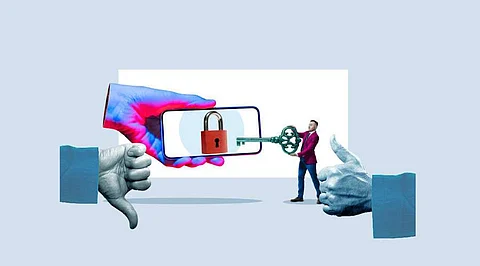

The newest form of encryption currently in use is called quantum cryptography. This area of encryption uses a combination of processing power and physics processes based on physical principles. Quantum key distribution and quantum-safe cryptography are powerful security techniques developed using this processing capacity and quantum mechanics.
Quantum cryptography employs encryption and cryptography by the principles of quantum physics. The security that results from integrating quantum mechanics into encryption is so strong that no one can access the data transferred and encrypted using this method.
The given encryption is uncrackable, even if a hacker accessed quantum computers and the whole set-up. Quantum encryption uses the "no change theory," and the many quantum mechanics states to protect the data. Quantum encryption is, without a doubt, superior to the conventional cryptographic methods we still employ today regarding quality, dependability, and authenticity. Although the data is almost impenetrable, thanks to the widely used Advanced Encryption Standard (AES), nothing is mysterious about hacking.
Quantum cryptography uses discrete light components, such as photons, to transmit and transfer data. Wires made of fiber optics are used to convey this data. The security is dependent on the use of quantum physics since photons stand in for binary bits. Their employment is effective because photons and other light particles may exist in several locations at once. The particles cannot be duplicated, and no quantum attribute may be viewed without modification. Quantum cryptography can offer the highest level of security thanks to these features. Some would argue that the keys exchanged via quantum cryptography are impenetrable since photon theory is being used here. However, there are several ways to circumvent this method's protection. However, something has yet to be proven or shown so far, and even with the power of quantum computers, it is difficult to crack a quantum key.
The positive and negative aspects of Quantum Cryptography
Even a sophisticated technology like quantum cryptography has some limits.
Why is quantum cryptography necessary?
The saying "Necessity is the mother of invention" is one you may be familiar with. The development of quantum cryptography and encryption follows a similar path. The advent of quantum computing may have made the current encryption standards susceptible. The asymmetric encryption has been cracked by computers using Shor's algorithm and quantum computing. Regular computers cannot find the prime number required to decode data using the RSA encryption standard. But the prime number can be found by a quantum computer. It can therefore decipher the key. A brute force attack from a quantum computer has made the AES-64 and AES-128 bit susceptible. The brute force attack has lessened the security net even though they have yet to be breached. This reduces the AES-256 bit to the AES-64 bit and the AES-128 bit to the AES-64 bit. Although the AES 128-bit standard is still sufficient to safeguard the data, it is only a matter of time until quantum computers can decipher the encryption.
Join our WhatsApp Channel to get the latest news, exclusives and videos on WhatsApp
_____________
Disclaimer: Analytics Insight does not provide financial advice or guidance. Also note that the cryptocurrencies mentioned/listed on the website could potentially be scams, i.e. designed to induce you to invest financial resources that may be lost forever and not be recoverable once investments are made. You are responsible for conducting your own research (DYOR) before making any investments. Read more here.
